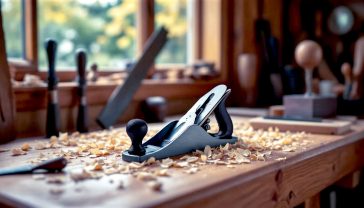The Great British Bottle Guide: From Antique Treasures to Modern Masterpieces
Explore the UK’s ultimate guide to decorative bottles. From Victorian poison bottles to Bristol blue glass, learn their history and how to display these glass treasures.

This post may contain affiliate links. If you make a purchase through these links, we may earn a commission at no additional cost to you.
There’s a quiet magic to an old bottle. Perhaps you’ve found one yourself—a small, dark green bottle half-buried in the garden, or a curiously shaped blue one at a car boot sale. You turn it over in your hands, feel the weight of the glass, and wonder. Who held this last? What was inside it? A Victorian cure-all potion? A splash of perfume for a night out a century ago? Or maybe just some fizzy lemonade.
These humble objects are more than just old rubbish. They’re tiny time capsules, holding stories of craft, industry, and everyday life. Decorative bottles, whether they’re ancient Roman glass, quirky Victorian poison containers, or sleek modern art pieces, connect us to the past and bring a unique splash of character to our homes.
In this guide, we’re going on a grand tour of the world of decorative bottles. We’ll uncover their fascinating history, explore the most popular types you’re likely to find here in Britain, and share some tips on how to start your own collection or simply use them to make your home look brilliant. So, let’s get started and see why these glass treasures have captivated people for centuries.
What Exactly Makes a Bottle “Decorative”?
At its heart, a bottle is just a container. But what turns it from a simple vessel into something we want to put on a windowsill to catch the light? It’s a mix of a few key things: shape, colour, material, and story.
- Shape and Form: The silhouette of a bottle is its first handshake. Some were designed with function in mind, like the strange Codd-neck bottles with a marble in the neck to keep lemonade fizzy. Others were shaped to be beautiful from the start, like elegant, long-necked perfume decanters. Poison bottles were often made in striking shapes like coffins or given ribbed textures so you wouldn’t accidentally grab them in the dark—a practical design that now makes them fascinating collectors’ items.
- A Splash of Colour: Colour is often what first draws us to a bottle. The deep, rich cobalt of Bristol Blue glass is famous for a reason. Victorians loved amber and dark green glass for medicine bottles because it helped protect the contents from sunlight, a bit like modern sunglasses for liquids. Clear glass, or flint glass, was a sign of quality, showing off the purity of the gin or perfume inside.
- The Material Itself: While most bottles we think of are glass, decorative vessels can be made from ceramics, stoneware, or even metal. But it was the invention of glassblowing, thousands of years ago, that really changed the game. British glassmaking, in particular, has a rich history. In the 1670s, a chap named George Ravenscroft figured out how to make lead crystal, a type of glass that was clearer, heavier, and sparkled more brilliantly than anything seen before. It made British glassware world-famous.
- Its History and Story: Sometimes, the most decorative thing about a bottle is its age and the story it tells. An embossed name of a long-gone local chemist, the faint bubbles and imperfections in hand-blown glass, or a simple stoneware ink pot—these things connect us to the people who used them. They’ve survived, while so much else from their time has vanished.
A bottle doesn’t have to be a priceless antique to be decorative. A collection of modern gin bottles with beautiful labels, a group of simple wine bottles used as candle holders, or even a jam jar filled with wildflowers can be just as lovely. It’s all about seeing the beauty in the everyday.
A Quick Spin Through Bottle History
To really appreciate these objects, it helps to know where they came from. The journey of the bottle is a story of human ingenuity, stretching back thousands of years.
The Ancient World: The First Glass Masters
The story starts a very long time ago. The Mesopotamians and Egyptians were making basic glass objects nearly 4,000 years ago, but it was incredibly difficult and expensive. Glass was rarer than jewels.
Everything changed when the Romans perfected glassblowing around 50 BC. It was a revolutionary technique. Suddenly, you could make glass vessels relatively quickly and cheaply. Roman glass bottles, jars, and jugs spread across their empire, from Syria to, you guessed it, Britain. Archaeologists still dig up beautiful examples of Roman glass right here in the UK, often with a lovely iridescent shimmer from centuries spent underground.
Britain Finds Its Sparkle: From Forests to Factories
After the Romans left, glassmaking in Britain was a bit hit-and-miss for a while. For centuries, most glass was made in small workshops, often deep in forests where there was plenty of wood to fuel the furnaces.
The big leap forward came in the 17th century. As we mentioned, George Ravenscroft’s invention of lead crystal in the 1670s was a game-changer. His glass was strong, clear, and perfect for cutting intricate designs into. It put English glass on the map and led to the beautiful Georgian decanters and drinking glasses that are still so prized today. The industry boomed, especially in areas like Stourbridge in the Midlands, which became a world centre for glassmaking.
The Victorian Boom: A Bottle for Everything
The 19th century was the golden age of the bottle. The Industrial Revolution meant factories could churn out bottles on a massive scale. At the same time, cities were growing, and people started buying more and more pre-packaged goods.
Suddenly, there was a bottle for absolutely everything:
- Medicines and “Quack” Cures: The Victorians were obsessed with patent medicines, and each one came in its own distinctive bottle, often with bold, embossed lettering promising to cure everything from baldness to a broken heart.
- Ink: With rising literacy and the new penny post, everyone needed ink. Stoneware and glass inkwells became a staple in every home.
- Poisons: With chemicals like carbolic acid and arsenic being used for cleaning and pest control, it was vital to stop people from drinking them by mistake. This led to the creation of highly distinctive poison bottles in bright colours and textures.
- Food and Drink: From marmalade jars and sauce bottles to beer and mineral water containers, the shelves of Victorian kitchens were lined with glass.
This explosion in bottle production is why so many of the antique bottles we find today are Victorian. They were made in their millions, and because glass doesn’t rot, many have survived.
The 20th Century and Beyond: Milk, Pop, and Modern Art
The 20th century brought more changes. Automatic bottle-making machines were invented, making production even faster and more uniform. This is when you start to see the classic British milk bottle, delivered to the doorstep, and the iconic shapes of brands like Coca-Cola. The Codd-neck bottle, with its fun marble stopper, had its heyday before being replaced by the metal crown cap.
Today, while plastic has replaced glass for many things, there’s been a huge resurgence of interest in glass bottles. Gin makers compete to create the most beautiful and distinctive bottles, artisan glassblowers create stunning one-off pieces, and many of us are looking for ways to reuse and upcycle glass bottles as part of a more sustainable lifestyle.
A Grand Tour of Popular Decorative Bottles
Now that we know the history, let’s dive into the specific types of bottles you’re likely to come across. Think of this as your spotter’s guide for car boot sales, antique shops, or even just clearing out the attic.
Antique & Vintage Treasures (Pre-1950s)
These are the bottles that carry the most history. They have character, imperfections, and a story to tell.
Apothecary & Chemist Bottles
Long before the NHS and blister packs, your local chemist (or apothecary) would mix remedies by hand. They stored their ingredients in beautiful glass bottles, often with elegant glass stoppers and mysterious Latin labels. You might find smaller bottles for pills and potions sold to customers, embossed with the chemist’s name and address.
- What to Look For: Labels under glass (
label under glassor LUG), ground glass stoppers, pontil marks (a rough scar on the base from where it was broken off the glassblower’s rod), and embossed names of old remedies. - Decorative Tip: A collection of these on a bathroom shelf or in a cabinet creates a wonderfully curious, old-world vibe. They look especially good backlit by a window.
Poison Bottles
These are a collector’s favourite for a reason—they were designed to be noticed. To prevent deadly mix-ups in low light, poison bottles were made in vivid colours like cobalt blue, deep green, and sometimes even red. They often had raised patterns, like ribs, dots, or lattice designs, and were sometimes made in unusual shapes like coffins or skulls. Common embossed warnings include “POISON,” “NOT TO BE TAKEN,” and “DEATH.”
- What to Look For: Striking colours (especially cobalt blue), textured surfaces, and clear warning text. They are almost never clear glass.
- Decorative Tip: A few poison bottles grouped together on a mantelpiece make a dramatic and fascinating display. Their dark beauty is a real conversation starter.
Ink Bottles & Inkwells
Before biros and felt tips, there was the dip pen and ink. This meant every home, school, and office needed an inkwell. Early ones were often simple stoneware pots, but the Victorians produced countless designs in glass. Some are cube-shaped, others are conical (to prevent tipping), and some have clever designs for getting the last drops of ink.
- What to Look For: Small, sturdy shapes. Look for names like “Stephens’,” “Waterman’s,” or “Quink” embossed on them. Many have a crusty residue of old ink inside, which adds to their charm.
- Decorative Tip: A single, beautifully shaped inkwell makes a perfect paperweight on a desk. A collection of them in different shapes looks wonderful in a study or on a bookshelf.
Scent & Perfume Bottles
Perfume has always been a luxury, and the bottles were designed to reflect that. From tiny Victorian tear-catcher bottles to the glamorous Art Deco designs of the 1920s and 30s, perfume bottles are often miniature works of art. They can be made of cut glass, coloured glass, or have ornate stoppers and silver details.
- What to Look For: Delicate shapes, cut-glass designs, and elegant stoppers (known as daubers). Look for famous names like “Guerlain” or “Coty” on the base.
- Decorative Tip: Display a collection of vintage perfume bottles on a silver tray on a dressing table for a touch of old-school glamour.
Gin & Beer Bottles
The British love of a tipple has given us some fantastic bottles. Early gin was often sold in square-sided, dark green or olive glass bottles, sometimes called “case gin.” Victorian beer and mineral water companies used thick, heavy glass bottles to withstand the pressure of the fizz inside. The most famous is the Codd-neck bottle, invented in 1872 by Hiram Codd. It has a glass marble in the neck which is pushed up by the carbonation to seal the bottle. Kids used to smash the bottles to get the marbles out, which is why intact ones are so prized by collectors.
- What to Look For: For gin, look for dark, square “case” bottles. For beer and pop, look for thick glass and names of old local breweries or mineral water companies. And, of course, keep an eye out for any bottle with a marble trapped in its neck.
- Decorative Tip: Old, dark green gin and beer bottles make brilliant, rustic-looking candle holders or single-stem vases.
The Beauty of Coloured Glass
Sometimes it’s not the age or the shape, but the colour alone that makes a bottle special.
Bristol Blue Glass
This is probably the most famous type of British coloured glass. Its signature deep, rich cobalt blue colour was first developed in Bristol in the late 18th century. The original Bristol glassworks became famous for creating beautiful decanters, glasses, and decorative items for wealthy homes. While the original company is long gone, the tradition has been revived, and you can buy new Bristol Blue glass today. Antique pieces are highly sought after.
- What to Look For: An intense, pure cobalt blue colour that glows when light shines through it.
- Decorative Tip: You don’t need much to make an impact. A single Bristol Blue bottle on a windowsill where it can catch the sun is all you need for a stunning focal point.
Greens, Ambers, and Aquas
Other colours tell their own stories.
- Green Glass: Often used for wine, champagne, and beer, as the colour offers some protection from UV light, which can spoil the drink. The shades can range from a light olive to a deep forest green.
- Amber or Brown Glass: This was the go-to colour for medicine and chemicals for the same reason—it’s excellent at blocking sunlight. Think of old Lysol bottles or cough medicine containers.
- Aqua Glass: A pale, blue-green colour, common in older, everyday bottles from the 19th and early 20th centuries. The colour comes from iron impurities in the sand used to make the glass.
Artisan, Themed & Novelty Bottles
Not all decorative bottles are antiques. Many are created as beautiful objects in their own right, combining incredible craftsmanship with a sense of fun and wonder.
Ship in a Bottle
This is the classic maritime craft, a seemingly impossible object that has fascinated people for over 200 years. How do they get the ship in there? The secret, of course, is that the ship is built outside the bottle with its masts and sails folded down. It’s then inserted into the bottle, and the builder painstakingly uses long, thin tools to pull strings and raise the masts into position. It requires immense patience and a very steady hand.
- What it represents: A triumph of detailed craftsmanship and a nod to our island nation’s seafaring history.
- Decorative Tip: A ship in a bottle is a timeless piece for a study, a living room bookshelf, or a boy’s bedroom, bringing a sense of adventure and history.
“Potion” & “Magic” Bottles
Thanks to the popularity of fantasy worlds like Harry Potter, there’s a growing trend for creating or collecting “potion” bottles. These are often small, interestingly shaped bottles filled with coloured liquids, glitter, and other mysterious-looking contents. They’re usually sealed with wax and decorated with old-fashioned labels, charms, and twine.
- What it represents: A fun, creative, and modern take on the old apothecary aesthetic. It’s all about imagination and creating a sense of wonder.
- Decorative Tip: These are perfect for themed displays, especially around Halloween, or for adding a touch of quirky personality to a teenager’s bedroom or a creative workspace. You can easily make your own with craft supplies.
Message in a Bottle
The idea of sealing a message in a bottle and casting it into the sea is deeply romantic. It has a long history, with tales of shipwrecked sailors sending last goodbyes and lonely souls searching for connection. Today, it’s more often a bit of fun on a beach holiday, but the idea still captures our imagination.
- What it represents: Hope, mystery, and the romance of the unknown.
- Decorative Tip: A simple, clear bottle with a rolled-up piece of parchment or a special note inside can be a lovely, personal decorative item. It’s perfect for a coastal-themed room or as a unique way to present a special message or gift.
Upcycled & Repurposed Bottles: Modern & Sustainable Style
One of the best things about decorative bottles is that you don’t have to spend a fortune or hunt for rare antiques. The most beautiful displays can come from bottles you already have. With a bit of creativity, today’s wine, gin, or even olive oil bottles can become tomorrow’s treasures.
- Bottle Vases: The simplest upcycle. A single, elegant wine bottle can hold a tall flower stem, while a group of smaller bottles of different heights and colours can make a beautiful centrepiece for a dining table.
- Bottle Lights: This is a hugely popular trend. You can buy cheap, battery-powered “cork” lights (a string of tiny fairy lights attached to a fake cork) that you simply push into the top of any bottle. They instantly turn a nice gin or wine bottle into a magical-looking table lamp.
- Candle Holders: A classic for a reason. An old wine bottle is the perfect shape and weight to hold a tall dinner candle, creating a rustic, bistro-style atmosphere. Let the wax drip down the sides for extra character.
- Kitchen Storage: A clear glass bottle with a good stopper is perfect for storing homemade salad dressings or flavoured oils. It looks much nicer on the counter than a plastic container.
Your Guide to Collecting & Decorating
Feeling inspired to start your own collection or display? Here are a few practical tips to get you started on your bottle-hunting adventures.
Where to Find Decorative Bottles
- Car Boot Sales & Flea Markets: These are your best bet for finding interesting and affordable pieces. You have to be prepared to rummage, but that’s part of the fun. You never know what you might find.
- Antique & Charity Shops: A more curated but often more expensive option. Staff might have some knowledge about the items, which can be helpful. Don’t forget to check the dusty corners!
- Online Marketplaces: Sites like eBay and Etsy have a vast selection, but be prepared to pay for postage. It’s a great place to search for specific types of bottles.
- Mudlarking: For the more adventurous! Mudlarking involves searching the riverbed of the Thames (or other tidal rivers) at low tide. You need a permit for the Thames, but people find incredible things, including centuries-old bottles.
- Your Own Back Garden: It’s surprisingly common to find old bottles when digging a new flowerbed, especially if your house is old. They were often thrown into household rubbish pits.
What to Look For: A Beginner’s Checklist
When you’re starting out, it’s easy to feel overwhelmed. Here are a few things to check:
- Seams: Look for the vertical lines running up the side of the bottle. If the seams go all the way to the top of the lip, the bottle was likely made by a machine (after about 1910). If the seam stops on the neck, it was probably hand-finished. No seams at all could mean it’s very old and hand-blown.
- The Base: Look for a pontil mark—a rough, circular scar on the bottom. This indicates it was made using a hand-held pontil rod and is a sign of an older, hand-blown bottle.
- Bubbles and Imperfections: Small bubbles, streaks, and an uneven surface in the glass are common in older bottles and are part of their charm. It shows they weren’t made in a perfectly controlled factory.
- Embossing: Clear, readable embossed text can tell you what was in the bottle, who made it, and where it came from, making it much more interesting.
- Chips and Cracks: Check the lip and base for damage. While minor wear is normal, big chips or cracks can reduce a bottle’s value and make it fragile.
Cleaning Your Glass Treasures
Old bottles are often caked in dirt. Here’s how to clean them safely:
- Start Gentle: Begin by soaking the bottle in warm (not hot!) soapy water. Hot water can cause old glass to crack. A good scrub with a bottle brush will remove most surface dirt.
- For Stubborn Grime: For the inside, try filling the bottle with a mixture of uncooked rice or sand and a little water, then give it a good shake. The abrasive grains will help scrub the inside clean.
- Avoid Harsh Chemicals: Be very careful with chemicals, as they can damage the glass or any remaining labels. Never put antique glass in a dishwasher.
Creative Ways to Display Your Bottles
Once they’re clean, it’s time for the fun part.
- The Windowsill Gallery: This is the classic display for a reason. Lining up coloured bottles on a windowsill allows the light to shine through them, creating a beautiful stained-glass effect.
- Group by Colour: A collection of bottles in different shades of the same colour (e.g., all green or all blue) creates a very stylish and cohesive look.
- Mix and Match: Don’t be afraid to group bottles of different eras, shapes, and sizes. An eclectic mix on a shelf or mantelpiece tells a richer story.
- Use Them as Vases: The simplest and most beautiful use for any bottle is to hold a few stems of flowers or some elegant branches.
- Create a Centrepiece: Arrange a group of small bottles on a tray in the middle of a dining or coffee table. You can add flowers, candles, or fairy lights to complete the look.
The Enduring Appeal of a Simple Bottle
So, why do we love them? In a world of disposable packaging and mass-produced everything, an old glass bottle feels real and permanent. It has a weight and a coolness to the touch that plastic can never replicate.
Each one is a small piece of social history. A poison bottle reminds us of a time before child-proof caps. A milk bottle evokes the sound of the morning milk float. A Codd-neck bottle brings back memories of fizzy pop as a weekend treat. They are objects that were meant to be used, thrown away, and forgotten, but they have survived, and their survival makes them special.
Whether you’re a serious collector hunting for a rare find or simply someone who appreciates the way an old wine bottle looks with a candle in it, decorative bottles offer an accessible and endlessly fascinating way to bring history, colour, and personality into your home. The next time you see one, pick it up. Who knows what stories it might have to tell.
Further Reading
For those eager to delve deeper into the world of glass and bottle collecting, these resources are an excellent starting point:
- The Victoria and Albert Museum (V&A): Explore the extensive online collection of British and international glassware, spanning centuries of design. https://www.vam.ac.uk/collections/glass
- The British Museum: Discover ancient glass, including incredible examples from Roman Britain that have survived two millennia. https://www.britishmuseum.org/collection/object/H_1922-0512-1
- BBR Auctions (Barnsley Bottle Recovery): A specialist UK auction house for antique bottles, providing a fascinating insight into what collectors are looking for and the history behind the items. https://www.onlinebbr.com
- Thames Mudlarking: The official Port of London Authority site with information on obtaining a mudlarking permit if you’re inspired to search for your own historical treasures. https://pla.co.uk/thames-foreshore-permits






